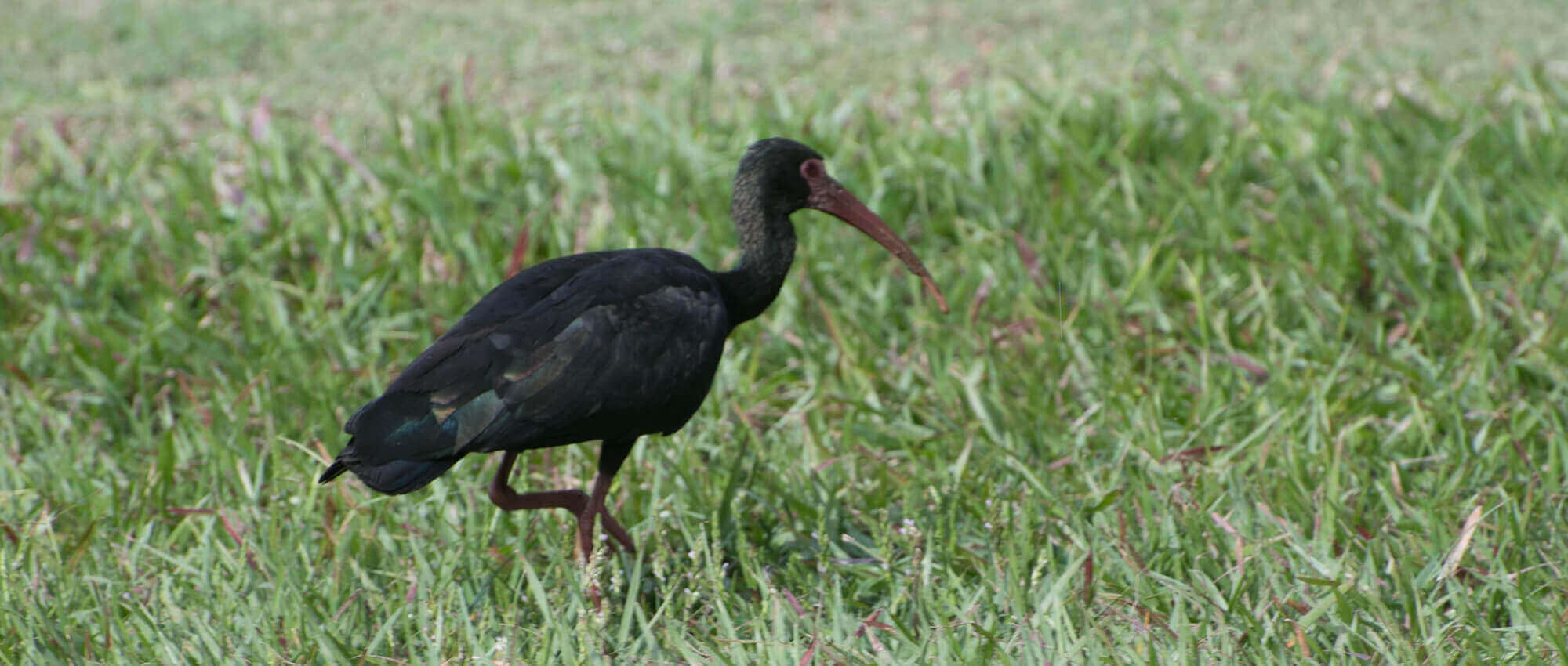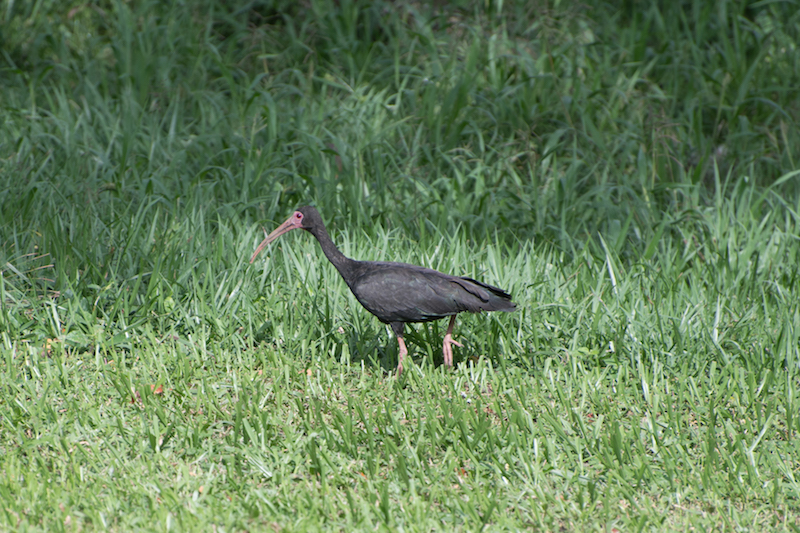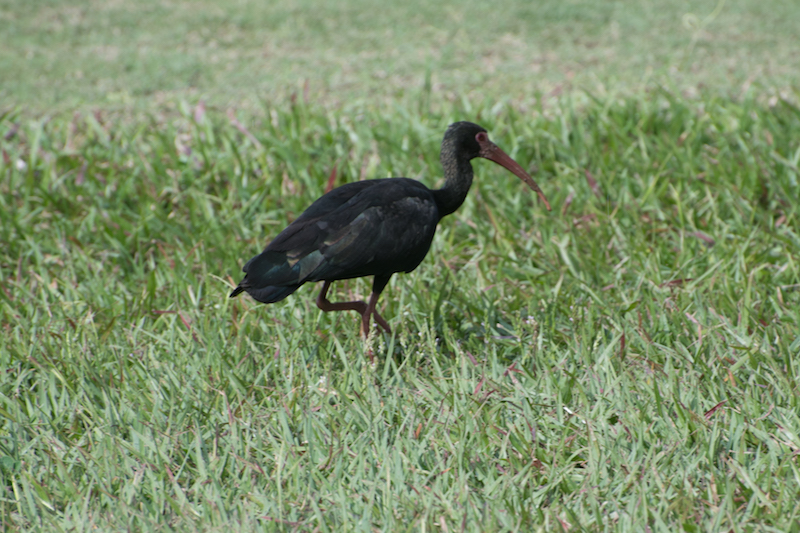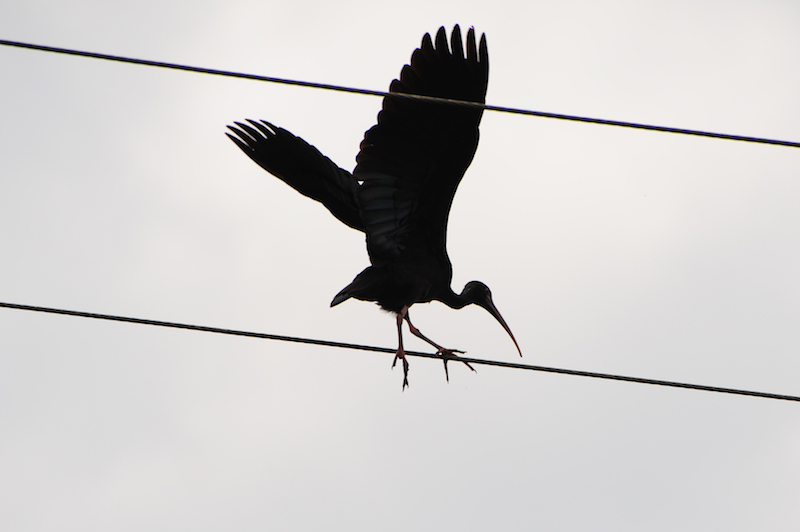
The BARE-FACED IBIS has pink face, bill, legs, and feet
El Coquito tiene sus partes desnudas rosadas
Phimosus infuscatus
This medium-sized ibis lacks any feathers on its face. Its plumage is bronzy-greenish black or dark brown. Its length ranges between 45 to 50 cm (18-20 in) and weighs about 500 g (1.1 lb). Its orange-reddish bill is long and decurved. The red-brown legs are long but shorter than other ibises. Iris reddish-brown. This is one of the ibis species with less marked sexual dimorphism in bill size. Males have larger bills than females. Their dark plumage and reddish skin color of its face distinguish this bird from other related species. It is found in wet meadows, swamps, pastures, marshes, rice fields, and muddy areas. It is gregarious and found in large flocks up to more than a hundred individuals. The bare-faced ibis feeds principally on small crustaceans, beetles, and insects. Although ibises are territorial and aggressive against others related species, Phimosus infuscatus shows low rates of aggressive behavior towards other ibis species. However, they are aggressive from food robbery from another ibis or animal. Nests are built almost flat and somewhat small for their size in lower parts of trees or shrubs. They often share nests with other species. The posture is 2-8 greenish-bluish eggs that are incubated by both parents for 3 weeks. Nestling fledge 3 weeks after hatching.
Ave de tamaño mediano de 45 a 50 cm de longitude y de un peso aproximado de 500 g. Se le reconoce fácilmente de otras especies relacionadas por su piel roja de la cabeza y su color oscuro de plumaje. Su cabeza no presenta plumas. Los adultos presentan su plumaje negro característico con trazos de verde azuloso metálico oscuro sobre todo en las alas. Su tarso o piernas son anaranjadas a rojizas y un poco mas cortas que otros ibises. Poseen un pico curvo de color amarillo. El iris de sus ojos tienen color castaño rojizo. Se la encuentra en humedales, ciénagas, lagos, lugares pantanos donde caminan buscando alimento con su pico. También frecuentan cultivos de arroz. Se alimentan de crustáceos y de una variedad grande de insectos. No son territoriales o agresivos como otras especies relacionadas. Su conducta agresiva solamente se manifiesta cuando otra ave o animal le roba su comida. Sus nidos son plataformas algo pequeñas en comparación a su tamaño. Los hacen de material vegetal y lo colocan en la parte baja de árboles o arbustos. A veces comparten nido con otras especies. Su postura es de 2 a 8 huevos de color verde-azuloso que son incubados por ambos padres por 3 semanas. Luego de la incubación permanecen en el nido 3 semanas y luego emprenden vuelo.

LAM_5826

LAM_5829

LM1_3272

LM1_3315

LM1_8364

LM1_3319
